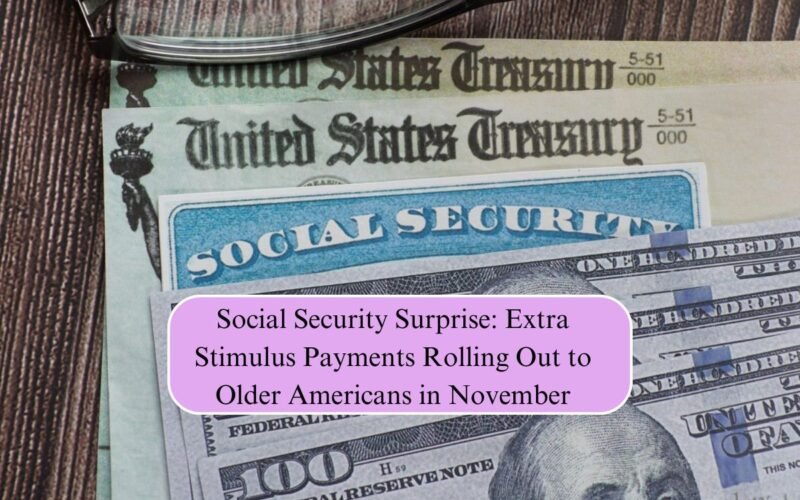Millions of seniors across the United States are in for a welcome surprise this November as extra Social Security stimulus payments begin rolling out to eligible recipients. The initiative aims to help older Americans deal with inflation, rising healthcare expenses, and increased living costs as the holiday season approaches. Many retirees will see an additional deposit in their accounts this month — and some may not even know they qualify.
Why Seniors Are Getting Extra Stimulus Payments
This November stimulus boost is part of ongoing efforts to support older adults living on fixed incomes. As inflation continues to challenge household budgets, the government has authorized an additional round of payments for qualified Social Security, SSI, and SSDI beneficiaries. The goal is to ensure that seniors can maintain financial stability during a period of economic uncertainty. Unlike standard monthly Social Security checks, these stimulus payments are one-time deposits designed to supplement retirement income and offset inflation-related expenses.
Who Qualifies for the November Stimulus Payment
Eligibility for the extra November payment depends on a few key factors. Seniors who meet the following criteria are most likely to receive the deposit:
- Individuals aged 65 and older currently receiving Social Security benefits.
- SSI and SSDI recipients who already receive monthly federal payments.
- Seniors who have filed a 2023 federal tax return and meet specific income thresholds.
- Low-income retirees and veterans who qualify for need-based benefits.
No additional application is needed — payments are being processed automatically based on existing Social Security and IRS records.
How Much Will Seniors Receive?
The payment amount varies depending on individual eligibility, but most qualified seniors will receive up to $1,400 in additional stimulus support. The deposit is separate from the monthly Social Security payment and will appear under a different transaction label, such as “IRS TREAS 310” or similar. This extra funding aims to assist retirees with end-of-year expenses, including energy bills, groceries, and prescription medications.
When Will the Payments Arrive?
Payments are being distributed in waves throughout November. Seniors who receive benefits through direct deposit will be the first to get the funds, often within a few business days of the rollout. Paper checks may take longer, depending on mailing times and local processing schedules. Many recipients have already reported seeing deposits appear in their bank accounts this week.
What to Do If You Don’t See Your Payment
If your payment hasn’t arrived yet, don’t worry. Some deposits may take additional time to process. Seniors should check that their banking information is current with the Social Security Administration (SSA) or IRS. Those who recently changed accounts or addresses may experience slight delays. If your payment doesn’t arrive by the end of the month, you can contact your local SSA office or use the IRS payment tracking tools for confirmation.
Why This Matters for Older Americans
For retirees relying on fixed incomes, every extra dollar makes a difference. This November Social Security stimulus is a lifeline for millions struggling to afford essentials amid high inflation and increased medical costs. It also represents continued efforts by the government to provide financial relief for vulnerable populations, especially seniors. Experts suggest using this payment strategically — for essentials, savings, or debt repayment — to maximize its long-term benefit.
FAQs
1. Who qualifies for the November Social Security stimulus payment?
Seniors aged 65 and older who receive Social Security, SSI, or SSDI benefits automatically qualify for the November payment.
2. Do I need to apply for this payment?
No. Payments are being processed automatically based on SSA and IRS records. No separate application is required.
3. How much money will I receive?
Most eligible seniors will receive up to $1,400 in extra stimulus support, depending on their income and benefit type.
4. When will I get the payment?
Payments are rolling out throughout November. Those using direct deposit will receive funds first, followed by mailed checks.

